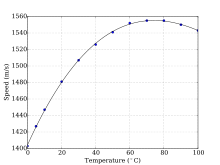

Critical insertion time is the amount of time required to form more than enough fissile material to maintain a nuclear chain reaction, known as forming a critical mass. These cameras were able to capture uranium-235’s “slow” critical insertion time of about one millisecond. High-speed cameras were used to photograph tests of the uranium “gun-type” bomb design. These cameras can employ the rotating mirror and rotating drum systems to take high-speed images.Īt Los Alamos, NM during the Manhattan Project, scientists employed high-speed photography as a way to study and evaluate their nuclear weapons designs and tests. Streak cameras have slits instead of the normal camera shutter. Streak photography is similar to the type of photography used in “photo-finish” images. Streak photography is another relevant form of high-speed photography. For more information about how these types of cameras work, please click here. In order to break down the high-speed actions even further by shooting more frames per second, rotating mirror and rotating drum techniques were developed.

The most common way to produce this type of advancement is to replace the normal camera shutter with a rotating parallel-sided glass block ( rotating prism photography).Īs the prism rotates, it moves the image in sync with the film at the same time, the prism serves as the shutter. Instead, high-speed cameras use a form of continuous advancement that allows the film to move at a higher velocity than with intermittent movement. Unlike conventional cinema cameras, high-speed cameras do not use intermittent movement to advance their film. After recording a sequence of images at high-speed, the film can be played at normal speed, which causes the sequence to appear in slow motion and allows for better visual analysis. High-speed cinema cameras are able to capture subjects and events happening at extremely fast speeds by syncing the speed of the film with the speed of the image. As a result, the images appear to move and happen in real time when the film is played forward at normal projection speed.
Speed of sound in fps series#
In order to evoke a feeling of motion from still photographic images, film cinema (movie) cameras use “intermittent movement.” In capturing a continuous series of images on sequential frames of film, intermittent movement is used to progressively advance the film frame by frame. Miller filed a patent for a rotating mirror camera that was theoretically capable of 1,000,000 fps. Later, the laboratory sold its design to the Wollensak Optical Company, which improved the camera to handle 10,000 fps. Named the Fastax, this camera could produce 5,000 fps. With a desire for even faster cameras, Bell Telephone Laboratories developed their own high-speed camera.

The cameras ran 16 mm film at 1000 frames per second (fps) and a 100-foot load capacity. In the 1930s, Bell Telephone Laboratories purchased high-speed cameras from Eastman Kodak for their studies of the effects of relay bounce. Mach’s instrumental work in supersonic motion is why the speed of sound bears his last name. Austrian physics professor and philosopher Ernest Mach used Salcher’s photograph, “Bullet in Flight,” in his studies of supersonic motion. Using twenty-four cameras attached to a shutter release system dictated by the horse’s galloping path, he captured a high-speed motion sequence proving horses do lift all four hooves off the ground when galloping.Įight years later in 1886, Austrian physicist Peter Salcher captured the first image of a supersonic bullet. Eadweard Muybridge, a British expat and photographer living in California, was commissioned to use photographs to determine whether a horse lifted all four hooves off the ground when galloping. The first major breakthrough with high-speed cameras was in 1878. These cameras allowed photographers to capture and create a frame-by-frame breakdown of events or occurrences too fast for the human eye to discern. One of these major advancements was the development of high-speed cameras. Since its invention in the 1830s, photography has undergone a number of important developments and advancements. Although it has become commonplace now, modern photography is still a rather new invention.


 0 kommentar(er)
0 kommentar(er)
